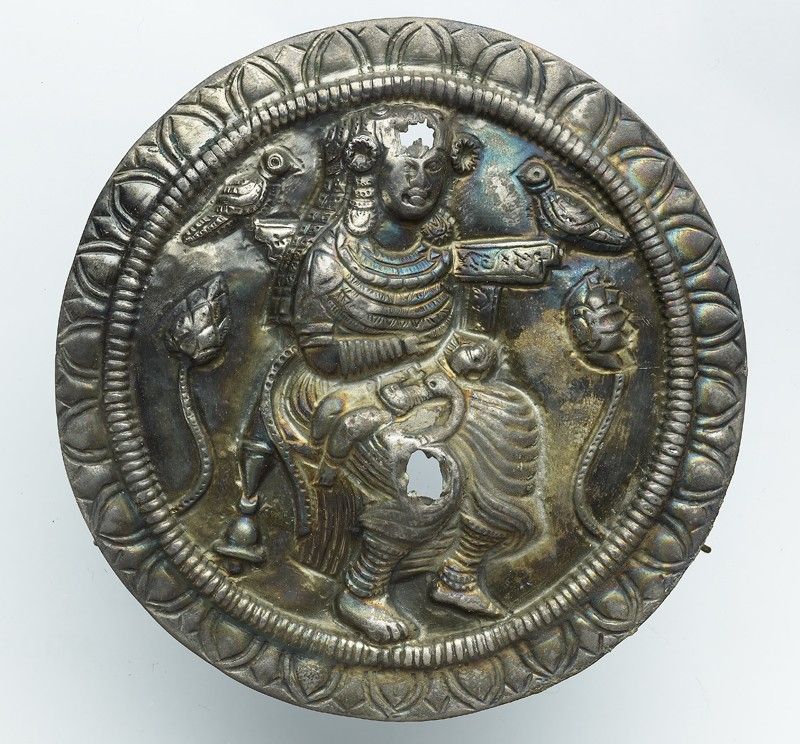The Roman sculptures of Sousse and surrounding sites [Les sculptures romaines de Sousse et des sites environnants] by Nathalie de Chaisemartin
Publications de l’École Française de Rome Année 1987
https://www.persee.fr
White marble, 2nd century
Hight from the top of the crown to the lower edge of the medallion: 34 cm. Diameter of the medallion: 32 cm.
Face H:10,5 cm.
The Sousse Archaeological Museum, Tunisia

Burr holes mark the tear points and decorate the fibula. Channels separate the neck of the veil and this one from the bottom of the relief, others run along the edges of the veil. […]
[She] has a face with very developed cheeks, framed by wavy bands covering the ears and surmounted by a semi-cylindrical crown. A veil placed on the crown falls on the shoulders; its extremities are attached between the breasts by a circular fibula. The bust wears a loose, hemmed neckline tunic. The left shoulder, more drooping than the right, leaves a free space in the field of the disc where a pair of rattles [krotala] appear.
The female character figured on this medallion has been identified by the authors of the catalog of the Museum of Sousse as the goddess Cybele, recognizable by her turreted crown and the cymbals placed in the field of the medallion, interpreted as an “oscillum”, while it should rather be seen as an “imago clipeata” intended for parietal decoration. In the series of twelve medallions unearthed at Martres-Tolosans there is a Cybele twice the size of our document. Her hairstyle has, in addition to the headbands, short locks going down in front of the ears; the mural crown is like in Sousse low and regular, but the method of attaching the veil, which recalls in the Cybele of Sousse the suffibulum of the statue of the Great Vestal Virgin kept in the Museum of the Baths, is different. The rattles [krotala], necessary to distinguish Cybele from other deities with a turreted crown such as Cybele or Tutela, are found in Rome on the relief representing the archigallus of Cybele. Wear on the face makes precise dating difficult, but on the basis of the presence of trephine channels separating the different planes and the decoration of trephine holes on the brooch, we can propose for this medallion a dating in the last quarter of the 2nd century AD.












